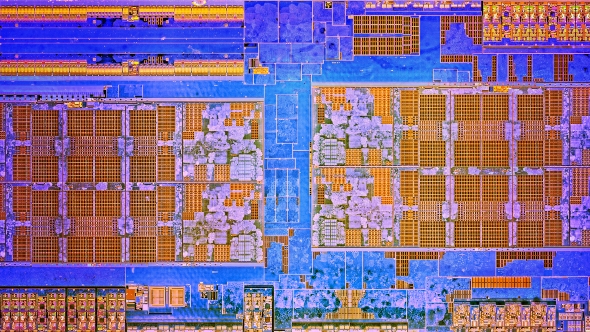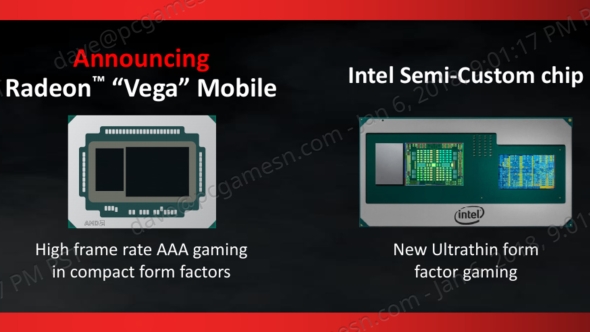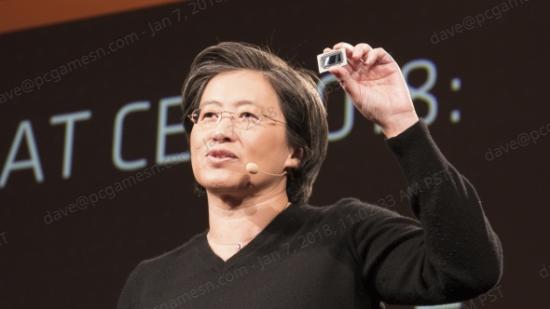AMD is promising to bring their first 7nm product to market by the end of this year and it’s going to be a 7nm AMD Vega GPU. But don’t get too excited just yet because it’s going to be a Radeon Instinct card for machine learning and not for any gaming wizardry. Sadly it looks like the hoped-for RX Vega refresh has evaporated.
Don’t be too sad, these are the best graphics cards you can buy right now.
AMD have kicked off 2018 with a massive information overload, from announcing the February and April release dates for their Raven Ridge desktop APUs and 12nm Ryzen 2 CPUs respectively, to price cuts, Ryzen 3 Mobile chips, and completed next-gen designs.
But on the graphics front there’s maybe not as much to get gamers excited. Despite Dr. Lisa Su claiming that “2018 is the year you’ll see a lot of the power of Vega unlocked” it doesn’t look like there’s going to be a lot happening in the desktop market aside from AIBs finally launching their own versions of the RX Vega 64 and RX Vega 56 graphics cards.
But the announcement of 7nm Vega is very welcome – the improvements that come along with such a big shrink in the production process could work wonders for Vega’s overall performance – but it doesn’t look like it will usher in a refreshed range of 7nm gaming cards this year.
“Our first 7nm product is actually Vega-based,” says Dr. Su, “and it will be a machine learning product. So Radeon Instinct Vega 7nm for 2018.”
We had previously heard that Global Foundries would be producing 7nm processors this year offering more than double the transistor density compared with the 16/14nm lithography. Salty, ultra-vague, rumours floating around pre-CES AMD Tech Day, however, are suggesting that maybe the 7nm Vega wouldn’t be produced by them, with Samsung another potential manufacturing partner.

That’s not the only 7nm news as AMD chief tech officer, Mark Papermaster, has also announced that the 7nm second generation Zen CPU architecture is design complete too. With AMD’s current momentum that could mean Zen 2 processors hitting the market in 2019.
“We are excited that we have two 7nm designs,” says Papermaster. “The GPU design is complete at 7nm and our Zen 2 design is complete in 7nm.
“This is really an extension on all the base architectural levers that we need to stay on and ahead of the traditional curve of IPC gains each generation. What do I mean by that? Improved branch prediction, improved address generation throughput, improved floating point capabilities, improved performance per Watt – both by design and, of course, leveraging 7nm.”
And because the Zen 2 team has done their job on the design side of things they’re moving on to next-generation CPU designs.
“As I’ve said in the past we have leapfrogging design teams,” continues Papermaster. “So that Zen 2 team leapfrogs into the next generation and the Zen 3 team has been full at flight and is on track to keep on that curve of high-performance x86 CPUs.”

In perhaps better news for us gamers, especially those on the go, is the announcement that we will be seeing proper laptop versions of the Vega GPU tech, and not just attached to the Ryzen Mobile notebook chips either.
“This brings all of the Vega architecture capability into a discrete graphics mobile form factor,” Dr. Su explains. “We believe there’s a place in ultrathin, high-performance gaming that could use Vega-class performance in a very thin form factor.”
And, looking at the scale of the new discrete mobile chip, it looks like it could well be at home in some slimline gaming machines. The new GPU is almost half the height of the desktop variant – at just 1.7mm high – and looks an awful lot like the semi-custom silicon AMD have sold off to make the Intel Vega M G-series processors.
Judging from the physical size of the GPU portion of the Vega chip, in comparison with the size of the HBM2 module next to it, the Vega Mobile GPU looks a touch bigger than Intel’s own chip, which could well mean far more graphics cores inside it.
Could this really be what the 28 compute unit Vega part is that has spotted in databases? That would mean RX 570-level graphics performance for thin-and-light gaming notebooks, which is certainly nothing to be sniffed at.
